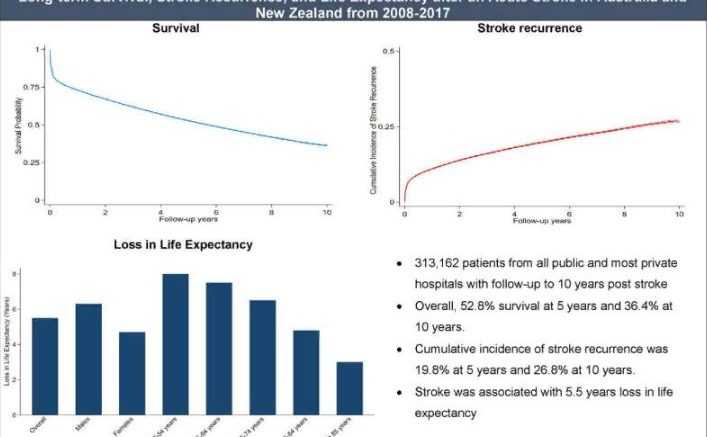Almost two-thirds of people who have an acute stroke die within a decade, and they have a high risk of having another stroke. This has led researchers to call for better patient care.
Researchers from the University of Queensland looked at data from more than 300,000 people who went to hospitals in Australia and New Zealand between 2008 and 2017.
The researchers also looked into how many years were lost due to stroke by comparing a patient’s predicted life expectancy to the length of actual survival.
Dr. Yang Peng, a research fellow with the Prince Charles Hospital Northside Clinical Unit and the study’s leader and UQ epidemiologist, said only 36.4 percent of patients survived beyond 10 years, and 26.8 percent had another stroke.
“We discovered that, on average, a stroke reduced a patient’s life expectancy by five and a half years when compared to the general population,” Dr. Peng said.
“In proportion, a stroke reduces a person’s life expectancy by one-third.”
“Patients with a hemorrhagic stroke who have bleeding in the brain are more likely to die, have another stroke, and have a shorter life expectancy than those with an ischemic stroke, which is caused by a burst blood vessel.”
This is what the Stroke Foundation has found. People who have high blood pressure and cholesterol levels, diabetes, smoking, and heart disease are more likely to have an acute stroke, which is one of the most common causes of hospitalization and disability in Australia.
Study co-author Dr. Kathryn Colebourne, a stroke and general physician at The Prince Charles Hospital, said the findings show how important it is to work together to improve acute stroke care.
“We need stroke networks of care to quickly identify patients who have had a stroke and provide them with important and time-sensitive treatments such as thrombolysis, a clot-busting medication, and endovascular therapy, a specialized procedure to remove blood clots in the vessels of the brain,” Dr. Colebourne said.
“We also need dedicated stroke units where multidisciplinary care can be given to these patients, which has been shown to cut down on stroke-related death and disability.”
Dr. Peng thinks that because so many people will have a second stroke, there should also be more attention paid to lifestyle and risk factor changes for secondary prevention.
“There have been very few population studies that have looked at the long-term outcomes of stroke,” he said.
“This information is important for both patients and health care providers who want to improve stroke care and preventative measures.”
This research was published in the journal Stroke.





